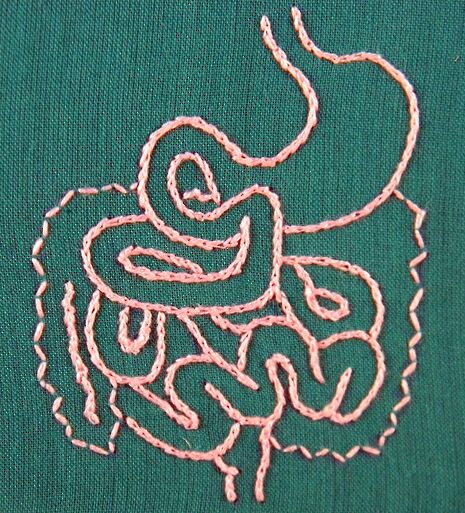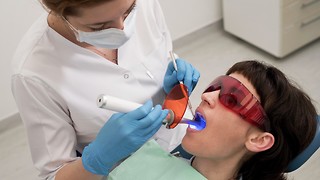Bacteria Bouquet IV: gut feelings
In the last of the series, Zi Ran Shen looks at the wild goose chase that is understanding gastric ulcers

The road to discovery is often winding and full of obstacles, but none can compare to what two scientists had to do to enlighten the world on the causes of gastrointestinal ulcers. Against the entire medical community, Robin Warren and Barry Marshall decided to follow a gut feeling. Stress and improper eating habits were always blamed for any gastric distress, but Warren and Marshall insisted it was bacteria. Helicobacter pylori were often found in the stomach of those with gastric ulcers and inflammation, but they were always believed to be an opportunistic pathogen that appeared when the stomach ulcers weakened the gastric acid. As it turns out, H. pylori can wreak havoc in our stomach more than any other bacteria.
Gastric ulcers and gastrointestinal inflammation have puzzled scientists for many millennia. After the invention of microscopes, many scientists utilised the new tool to explore microscopic life around them. They used the microbes as a way to explain and understand a variety of diseases. Gastrointestinal distress was one such disease. Prior to 1954, the working theory on gastric ulcers revolved around bacteria as the leading cause. Several strains were identified as potential causes, including S. aureus, E. coli, V. rugula, H. felis, and B. hoffmani. The excitement around understanding and perhaps eradicating a new disease was palpable. Every new bacterium could have been the one.
Unfortunately, the excitement was short lived. The theory of infection came to a screeching halt when gastroenterologist E. D. Palmer stepped into the spotlight. He took gastric mucosal biopsies from 1,180 subjects, and, using traditional staining and visualisation techniques, failed to find any bacteria. He then confidently declared that all bacteria previously found in the stomach lining had been either contamination or migration after death. To make such a statement required a lot of proof, and 1,180 subjects seemed to be enough. Palmer, however, had made one fatal flaw, which would cost future scientists not only their time and effort but also their health.
Most staining methods have are not suitable for visualising infective agents. Compared with human cells, bacterial cells are much smaller. Without using the high-resolution silver stain, Palmer missed the bacteria responsible for the disease. His influential paper became truth for most medical practitioners, except the two mentioned earlier: Robin Warren and Barry Marshall. Although many had accepted Palmer’s conjecture that stress and high acidity caused gastric ulcers, enough antibiotic treatments had been successful to warrant scepticism from the Australian duo. The two zeroed in on H. pylori and tried time and time again to infect piglets, but to no avail.
After three years of failure, the rest of the medical community heavily ridiculed Marshall and Warren. There was no way that any bacteria could survive the onslaught of stomach acid – Palmer had already conclusively proven it. Fed up with the opposition, Marshall decided that it was time for a Hail Mary. With the aid of Warren, he took a baseline endoscopy, and then drank a petri dish full of H. pylori. Within days he developed bad breath and nausea, within a week he was vomiting. On day eight, his endoscopy showed a highly inflamed GI tract. A follow-up biopsy revealed the large amounts of H. pylori that had now colonised his stomach. After carefully recording the progression of his condition for another six days, Marshall ended his ailment with an antibiotics treatment. The published results changed the medical world.
As bacteria are much simpler and smaller than human cells, much more diligence is required to visualise and characterise them. In the case of H. pylori, it can only be visualised by choice stains. Misidentification can lead to severe consequences, such as sending the medical community on a wild goose chase for several decades. The importance of bacteria in the health sector cannot be overstated. Understanding their behaviour aids global health in both prevention and treatment.
And of course, thanks to Warren and Marshall, we now know not to drink Helicobacter pylori
 News / Cambridge to have ‘England’s first official cycle street’7 October 2025
News / Cambridge to have ‘England’s first official cycle street’7 October 2025 Lifestyle / Which Cambridge tradition are you?6 October 2025
Lifestyle / Which Cambridge tradition are you?6 October 2025 News / Open letter calls on Newnham to divest from firms ‘complicit’ in Palestine9 October 2025
News / Open letter calls on Newnham to divest from firms ‘complicit’ in Palestine9 October 2025 Theatre / Macbeth makes a tragedy of the body itself9 October 2025
Theatre / Macbeth makes a tragedy of the body itself9 October 2025 News / Tompkins Table 2025: Trinity widens gap on Christ’s19 August 2025
News / Tompkins Table 2025: Trinity widens gap on Christ’s19 August 2025








